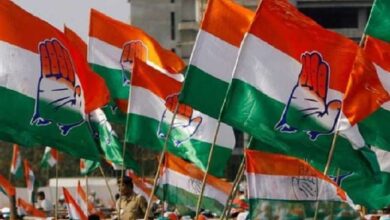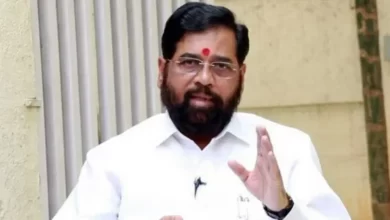small rivers big questions

[ad_1]
Atul Kanak
Government machinery has its own constraints and shortcomings. To save small rivers, it is more important than government schemes to make people sensitive towards rivers. Without local connectivity, rivers remain neglected. If people understand the cultural, social, mythological and economic importance of the river, then rivers can be freed from neglect.
A river flows from near Kanalsi village of Yamunanagar in Haryana- Thapna. This river, about fifteen kilometers long, is one of the tributaries of Yamuna. One of the specialties of this river is that some species of fish are found in it, which cannot live in polluted water. That is, the situation of pollution in this river is not like many major rivers of the country.
But in 2012, the existence of this river was in danger. One, the rainfall that year was relatively less. Some constructions in the name of development in the area from above stopped the flow of rainwater coming from tributary streams to Thapna. The condition of the river worried some vulnerable people in the area. The flow system of any major river depends on the position of its tributaries. If the tributaries dry up, how can the main stream flow? Today, if the condition of many major rivers of the country is deplorable, then one of the reasons for this is that we have not paid enough attention to save the tributaries, of which the rainy rivers are prominent.
Who can understand better than the people who live on its banks what it is like to suffocate a river like this? Till about one and a half hundred years ago, the provision of drinking water supply to the homes of the people was not the responsibility of any government or ruler. At that time people had to depend only on water sources like rivers, wells, stepwells, ponds or cisterns. It is said that there is a thunderstorm. The hope of selfishness makes a person’s behavior sensitive towards someone. In the era when people used to depend on such water sources for the fulfillment of their water needs, they were worshiped at that time, polluting them was considered a sin. Leave the disappearance of the river about one and a half hundred years ago, it used to worry the whole society till its course was changed.
In 2012, when the water in the Thapna river became very low, some vulnerable people living along the river started worrying about the fish and other creatures that were living in the river water. A panchayat was convened. People who had farms on the banks of the river were urged to pump irrigation water in a place where there is relatively more water, so that the organisms living in less water could be saved. Although the fear of famine was looming, but the farmers of villages like Kanyawala, Mandoli accepted this proposal of the Panchayat, believing that it would be a virtue to do so to save the lives of the silent creatures. Then under the ‘Yamuna Jio Campaign’ of a retired officer, twenty ‘Nadi Mitra’ circles were formed in this area. The members of these circles trained more than five hundred people of the area for river conservation. These efforts were also supported by the London-based organization ‘Thames River Restoration Trust’. The people living in the area feel connected to the river, so every year on the last Sunday of September began celebrating River’s birthday. All efforts paid off and Thapna river was saved.
Connectivity of the local people to the river can play a very important role in saving small rivers. Realizing this, a youth named Mustakim Mulla, who lives in Ramra village of Shamli district of Uttar Pradesh, launched a campaign ‘Ek Ghar Ek Lota Pani’ to save another tributary of the river Yamuna, under which the families of the village were asked It was requested that they symbolically dedicate every lot of water from their respective homes to the river. This campaign played an important role in awakening the sentiments of the people towards this nearly ninety kilometer long river.
When the Eastern Yamuna Canal was constructed in 1830, the flow of the river was interrupted in a large part between Saharanpur and Rampur. Gradually the river started becoming a victim of neglect. The members of the Nadi Mitra Mandali felt that if the Yamuna flood waters were not allowed to flow unnecessarily during the rainy season and were somehow diverted to the Katha river or stopped in the Katha river. It started with digging deep in the river bed for a part of one kilometer. A pond-like formation was formed in the riverbed and the amount of water accumulation increased. This was done at many places in the river flow area. Check dams were also built near these structures in the river water to check the flow of excess water. Although people’s dreams were hampered due to less rain in 2017, the campaign to save the Katha river finally paid off.
In 2007, there was a sudden water crisis in Bangalore. The water level in Thippagondanahalli reservoir, the main source of pure water supply, has become very low. The main source of water supply in this reservoir is a river named Kumudvati. But Kumudvati’s own condition was slim. As such, some people renovated ancient kalyanis (baoris) and other water bodies to extract sand from the river and raise the groundwater level in the area around the river. When the water level in the area rises, it also helps the river to maintain its flow.
Residents of Pallasena village in Palakkad district of Kerala adopted similar measures to save the water level in the river’s flow area to save the river Gayathrapuzha. The Brihatappuzha, the second largest river of Kerala, had also become very eroded at many places. Women were trained in the village of Pokkutukavo on the banks of this river, who built well-like structures for storing water in and around the riverbed. In Uttar Pradesh, work has been done to save the Mandakini and Tamasa rivers, while at the government level Tedhi, Manorama, Pandu, Varuna, Sasur, Aril, Morva, Naad, Kamravati, Baan, Sot, Kali, Purvi, Dadhi, Ishaan, Budhi Ganga And plans have been made to save the Gomti rivers. The historical river named Dravyavati in Jaipur city of Rajasthan had turned into a dirty drain. In view of its historical importance, its restoration was planned and a river front has been developed along its banks and it has been added to the major tourist places of the city.
Government machinery has its own constraints and shortcomings. To save small rivers, it is more important than government schemes to make people sensitive towards rivers. Without local connectivity, rivers remain neglected. If people understand the cultural, social, mythological and economic importance of the river, then rivers can be freed from neglect. The history of the Kalibei river of Punjab was associated with Guru Nanak Dev himself, but the neglect of rivers had turned Kalibei into a dirty drain a few years ago. On the initiative of Sant Balbir Singh Sichchewal, people got support and Kalibei River, which was once in the darkness of neglect, is today the center of reverence and tourism of the people.
Small rivers can be saved, provided the local people feel a sense of belonging towards them.
The post Small Rivers Big Questions appeared first on Jansatta.
.
[ad_2]






